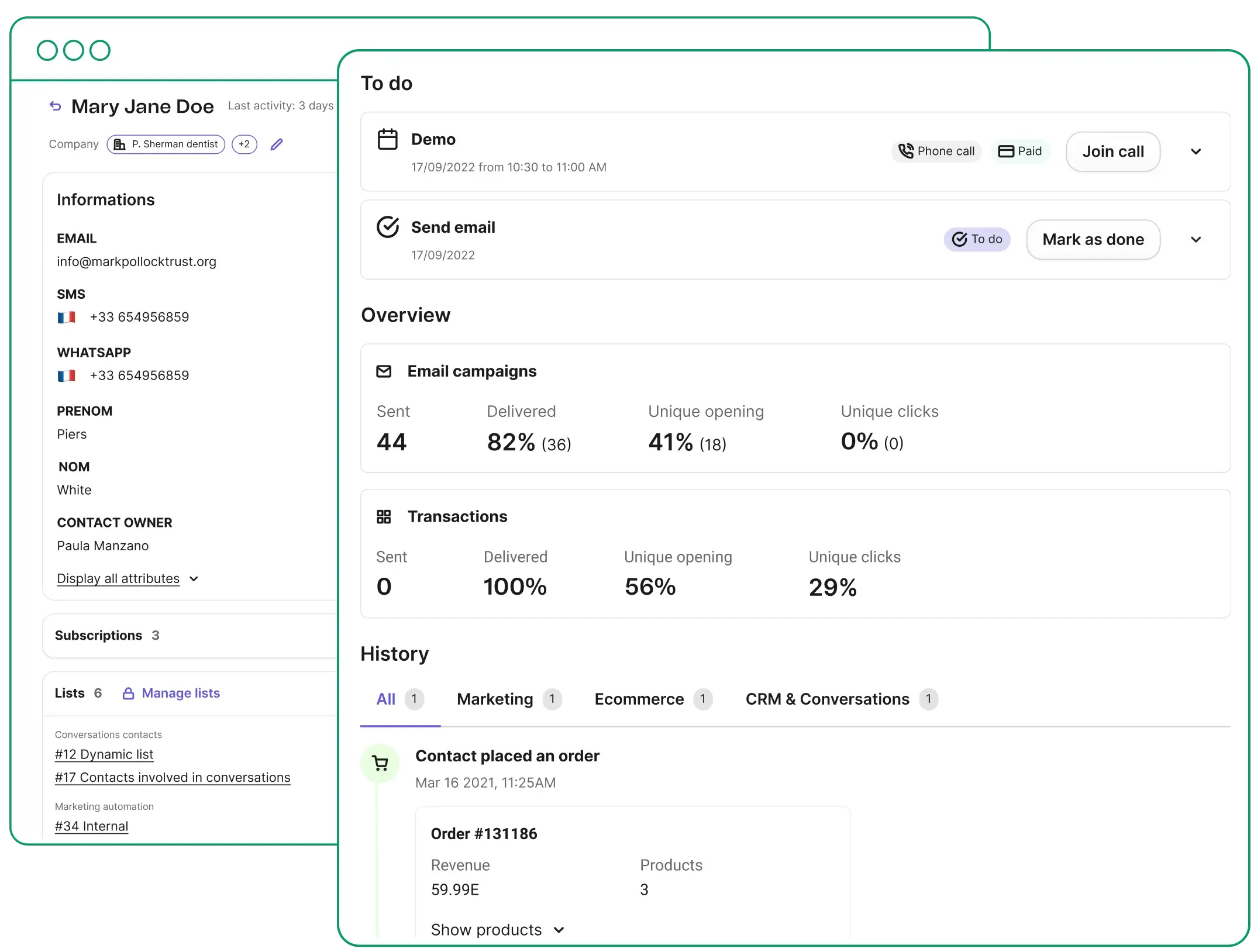VISIÓN 360 DEL CLIENTE
Afina tu estrategia con una visión 360

Obtén una visión integral
Mira los puntos de contacto con el cliente en todos los canales de comunicación.
Una solución colaborativa
Potencia la colaboración entre marketing y ventas con un perfil de cliente unificado.
Historial completo
Impulsa conversaciones significativas con un historial de interacciones actualizado.
Crea tu cuenta gratuita
Disfruta de contactos ilimitadosExplora otros productos
Marketing Platform
Funcionalidades principales
- Email marketing
- Automatización de marketing
- Campañas de SMS y WhatsApp
Sales Platform
Funcionalidades principales
- Gestión de pipeline de ventas
- Seguimiento automatizado de oportunidades
- Reuniones y grabación de llamadas
Conversations Platform
Funcionalidades principales
- Chat
- Phone
- Inbox universal
